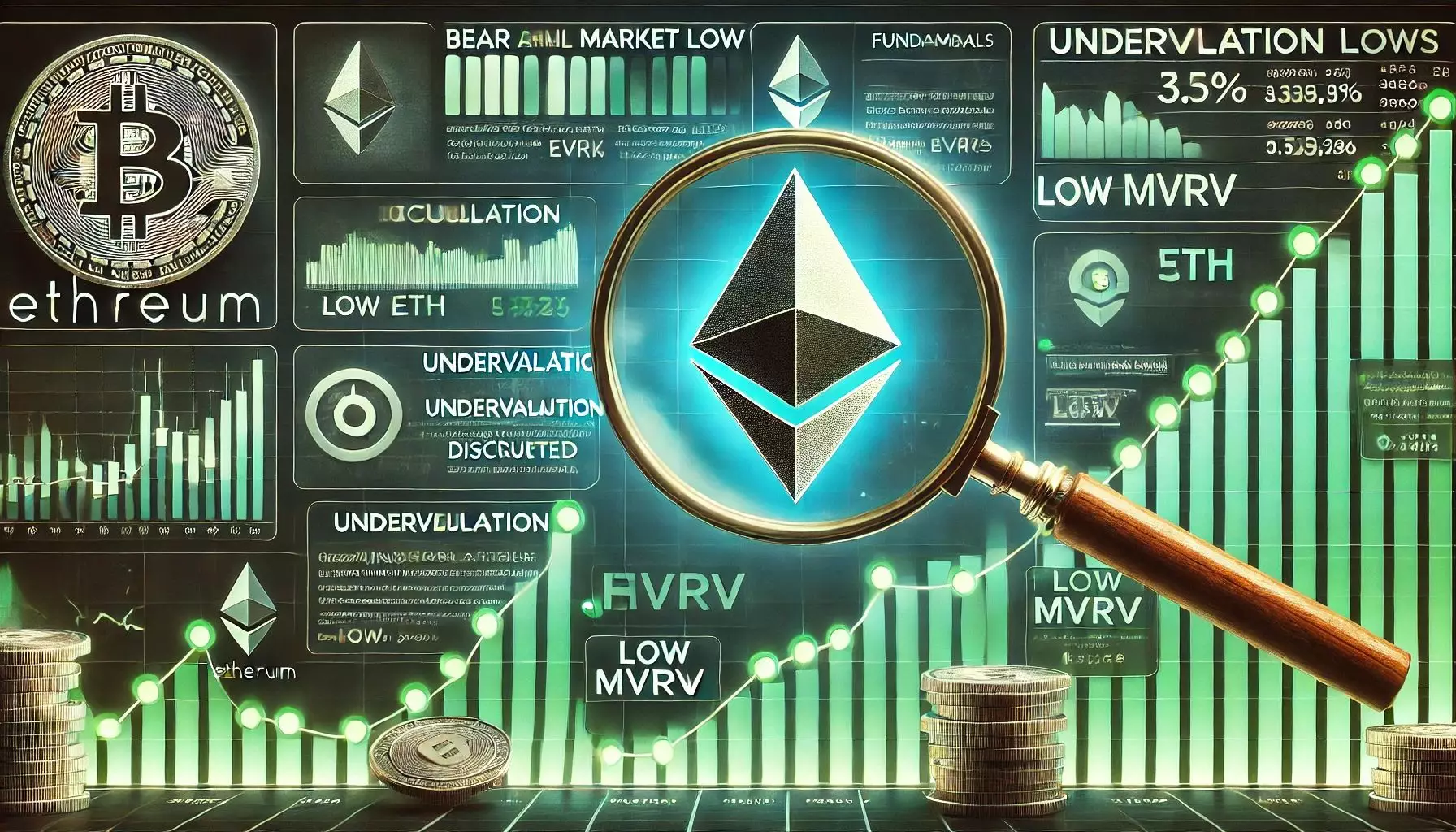Ethereum’s price has recently taken a nosedive, plunging more than 21% below the psychologically important $2,000 barrier. This stark decline raises eyebrows among market participants as the digital currency sits precariously on the edge of a bear market while its fundamentals continue to shine. Are we witnessing a transient dip that savvy investors will exploit, or is there something more sinister at play? The emotional rollercoaster for short-term holders, grappling with this sudden devaluation, may indicate an underlying tension brewing in the market. Sentiment is a double-edged sword; it can both uplift and obliterate confidence.
In such fraught circumstances, one can’t help but question whether this is just a routine market fluctuation or a more coordinated effort to pressure weaker investors. With increasing uncertainty swirling in the air, it’s essential to contextualize this price drop not solely as a failure of Ethereum itself but as an outcome influenced by broader economic and geopolitical dynamics. The ramifications of these fluctuations go far beyond the surface; they could either galvanize or deplete investor confidence, depending on how the narrative unfolds.
Institutional Dynamics: A Mixed Bag of Opportunity and Caution
Despite Ethereum’s precarious pricing situation, the underlying strength of its core fundamentals presents a dichotomy that astute investors must navigate. Analysts point out that over 95% of stablecoin transactions occur on the Ethereum network, reaffirming its status as the backbone of decentralized finance (DeFi). When one considers that Ethereum is also the only non-Bitcoin cryptocurrency with an approved spot ETF in the U.S., the potential for institutional investment is significant.
However, this opportunity comes wrapped in caution. A burgeoning trend suggests that institutional players may begin to tread lightly, fearing market saturation and the broader risks associated with high-volatility assets. Sure, Ethereum possesses all the right attributes for long-term viability, but recent market patterns create uncertainty about how quickly these institutional investments will manifest, leading to a standoff among various factions of investors.
A Battleground of Sentiment: Accumulation or Anticipation
For many long-term Ethereum holders, the current price action signals a potential accumulation zone. Savvy investors often view downturns as strategic entry points, aligning their investments to ride the eventual wave of recovery. This sentiment stands in stark contrast to those on the sidelines, anxiously anticipating further losses as macroeconomic uncertainties loom large. With global economic tensions escalating—largely driven by trade disputes between the U.S. and China—the crypto market, including Ethereum, finds itself constantly buffeted by external forces.
The narrative is complex, yet captivating. On one side are the optimists who see Ethereum’s innovations in Real World Asset (RWA) tokenization as game-changing. On the other, pessimists forewarn of an extended period of price stagnation, largely driven by rapidly shifting market sentiment. Investors must grapple with these varied outlooks, weighing the risks against the promise of the smart contract ecosystem that Ethereum has built.
Technical Landscape: The Tug-of-War Between Bullish and Bearish Forces
As Ethereum dances around the $1,590 mark, the market is caught in a tense tug-of-war. The current trading corridor between $1,500 and $1,800 stands as a battleground where bulls and bears engage in their relentless duel. The key for bullish momentum lies in breaking past crucial resistance zones—specifically, reclaiming the 200-day Moving Average and Exponential Moving Average along the $1,800 line. Such a victory could not only help invalidate the present lower-high structure but might serve to elevate sentiment toward a more hopeful trajectory.
On the contrary, underperformance could send Ethereum spiraling into the depths below $1,500, potentially igniting a streak of panic among traders. The scaling nature of Ethereum, with its numerous planned upgrades aimed at enhancing transaction speeds and reducing costs, remains a focal point of interest. Yet, in markets fueled by sentiment, mere fundamentals can sometimes take a backseat to emotional reactions driven by fear and speculation.
The Deterministic Nature of Market Sentiment
The current climate illustrates a crucial truth about the cryptocurrency space: market sentiment reigns supreme. While Ethereum boasts impressive fundamentals, it is consistently caught in the cyclone of global economic pressures and internal speculative trading behaviors. It raises the question: How much of Ethereum’s price performance is dictated by its inherent value versus the narrative woven by market sentiment?
Philosophically, it feels like a reflection on the human condition itself. Just as individuals often yield to the clutches of fear and uncertainty, so too do markets respond to perceived threats. The current analysis suggests that believing in Ethereum’s long-term potential remains a gamble—but one that may truly pay off for the staunch optimist willing to brave the storm. In this dance of uncertainty, Ethereum stands at a pivotal junction, poised to either emerge as a beacon of hope in financial innovation or dwindle under the weight of fear and economic upheaval.















